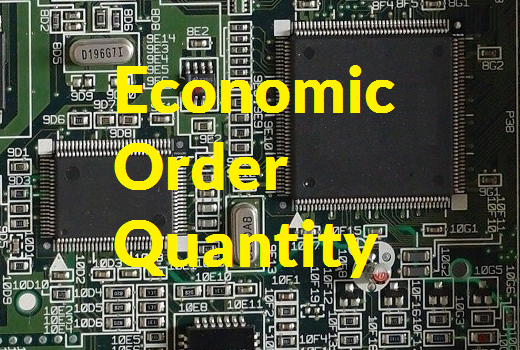gives the exact lot size at which the residual cost of the over-ordered material is the lowest. The EOQ can be both lower and higher than the initial target quantity for a job. The EOQ calculation and graph can initiate significant cost savings for both the customer/prospect and the EMS.
Residual material is expensive. In reality a large part of the residual materials are eventually written off and disposed of. Often unused expensive components are destroyed, being no longer usable after long-term storage (e.g. decreasing solderability). Both the technical and economic value is lost, as well as valuable raw materials due to "downcycling". But that price tag is not complete. Additional costs such as years of storage, material management, blocking of working capital and the cost of disposal must be added. This is an unsustainable model from an economic, financial and environmental/social perspective. So, let's reduce residual material!
A manual EOQ calculation is complex and far too time-consuming for a quote calculation. QuoteArchitect-MCA calculates per default the EOQ for every job and job size and converts it into a graph. Using a definable quantity related tolerance, the graph immediately shows the most efficient order quantity for the target job size and why.
Customers are always very fond of the EOQ graph, as it provides a clear insight into the exact order size to get the optimal cost per product and the lowest cost of the residual material.
Our related white paper gives a broader view on why both parties benefit from an EOQ calculation.

